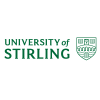Interview with Yolanda Lopez-Maldonado
Name of the community
Maya
Short description of community and hydrogeology of the area
Yucatan is located in the southeast portion of Mexico. The total area of Yucatan is 124, 409 km2 and the population (by 2018) was ca. 2.1 million inhabitants. The landscape of the area is defined by a highly permeable karstic soil, a notable absence of rivers or permanent freshwater resources in the surface, and a high number of natural wells or sinkholes (locally called cenotes, from the Maya word t´sonot).








